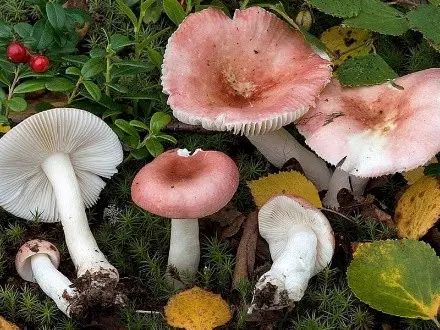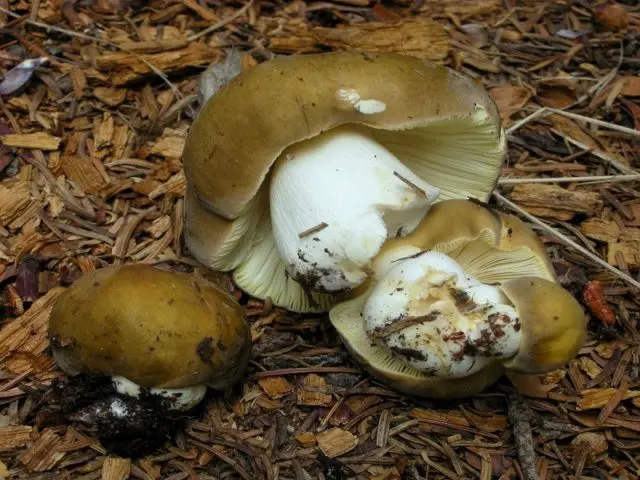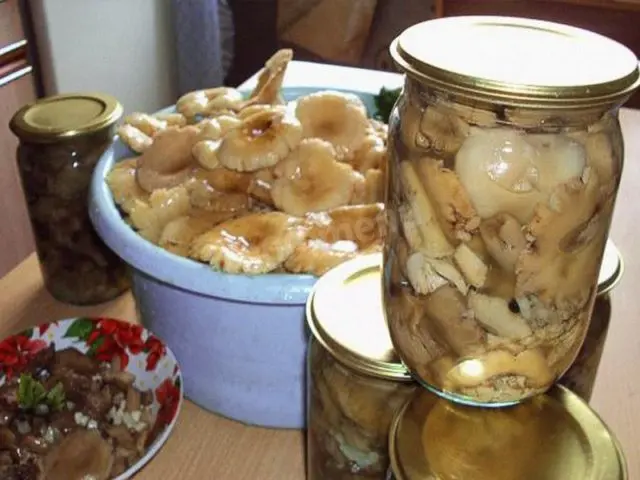Contents
On the territory of Our Country, you can find about thirty types of russula with different colors and shades of hats. They can be easily found in the forest of any region. The third part of the entire mushroom mass belongs to them. One of the species is called russula fading.
The name says little about color, external signs. To guarantee the collection of a real mushroom, it is important to clearly know all its distinctive characteristics, the places of greatest distribution. To prevent poisonous specimens from getting on the table, it will be useful to find out the similarities and differences between the representatives of the Syroezhkov family and their counterparts.
Where do russula grow fading
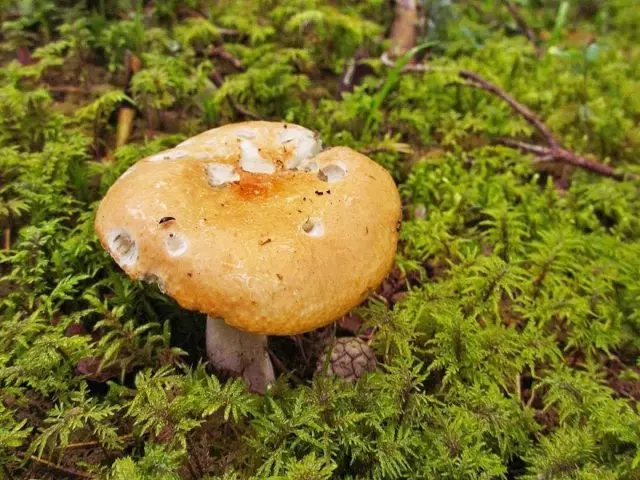
Russula fading, or graying, are found in moist pine forests of Eurasia, North America among lichens and mosses. They do not differ in abundant fruiting, but it is not difficult to find them in the forest. Depending on the weather and climatic conditions, the time of their collection begins in June and lasts until October. The most massive “quiet hunting” becomes in August-September. Russula can be collected not only among pines, but also in oak forests, broad-leaved forests, on mountain slopes.
Russula fading, like all its many species, live in a symbiotic relationship with the trees surrounding them. They form mycorrhiza. Mushrooms receive carbohydrates, amino acids from higher plants, while they themselves facilitate the absorption of water, mineral and antibiotic substances by the tree. This is important for russula, especially if the growing soils are extremely poor.
What do faded russula look like
Russula fading – a rather large mushroom. The diameter of its fleshy cap reaches 12 cm. The shape in the form of a hemisphere changes over time and becomes flat-convex or, conversely, concave. The color can be different: yellow, orange, yellow-brown, yellow-red. The edges of the cap are thin, with slightly pronounced stripes. The plates of the fruiting body are thin, fragile, easily broken. Their color changes over time from white in young mushrooms to gray in old ones. At the break, the flesh turns gray, regardless of the age of the russula. Pale yellow spores are elliptical in shape with spines.
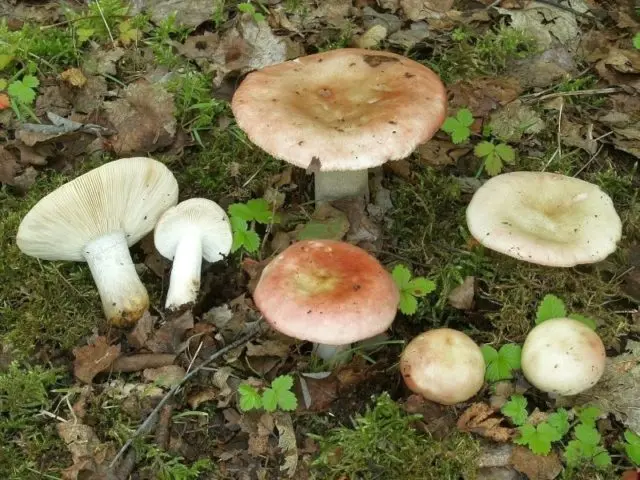
The leg reaches 10 cm in length, its diameter is about 1,5 cm, while at the top it is narrower than at the base. Its structure is dense at the bottom and hollow or “cotton” – in the center. In newly appeared mushrooms, the legs are white, over time their surface turns gray, wrinkles appear on it.
At all stages of their life, fading russula look different:
- at a young age, they look like bright round balls scattered across the grass;
- in the mature – they attract with their size, high legs and the shape of the hat;
- in old age they are extremely inconspicuous, with faded, spotted hats, gray flesh, often damaged by worms.
Is it possible to eat russula fading
Russula fading – edible mushrooms, related to their nutritional value to the third category. They got their name not because they are eaten raw, immediately after harvest, but because it takes much less time to pickle than other mushrooms. Within a day they are eaten, almost raw.
Mushroom pickers are not very fond of russula. Collecting them in the forest, they put only the elastic hats of young specimens in the basket. It is very difficult to bring them home safe and sound: because of their fragility, they break easily. With careless handling of mushrooms, only crumbs can remain. Nevertheless, they are used for second courses, salted, marinated separately and together with other mushrooms – boletus, boletus, butter.
Palatability
After minimal cooking, russula can be eaten. They have a pleasant sweetish nutty taste, absorb moisture during processing and remain crispy. Raw specimens may also be bitter if their fruiting bodies are no longer young. Some advise tasting the found russula by chewing on a small piece of her hat. It is believed that the absence of red shades indicates a higher taste of fruiting bodies.
Benefit and harm
Useful properties of russula fading are associated with their chemical composition, which includes:
- vitamins B1, B2, E, C;
- monosaccharides;
- saturated and unsaturated fatty acids;
- alimentary fiber.
Russula is rich in trace elements:
- iron;
- sodium;
- calcium;
- magnesium.
They are suitable for dietary nutrition for obesity, because they have a low calorie content – 19 kcal per 100 g of product.
In mushrooms of reddish hues, the enzyme russulin was found, which is used in the production of cheeses to coagulate milk.
Scientists have discovered in russula the properties of antibiotics that contribute to the destruction of staphylococci and harmful bacteria – pullularium.
Mushrooms also contain lecithin, which can lower blood cholesterol levels.
The dietary fiber of the product normalizes the functioning of the gastrointestinal tract, contributes to its cleansing.
Despite the above positive qualities, russula has contraindications for use. They should not be used:
- persons with intolerance to the product and allergic reactions to it;
- pregnant and lactating women;
- children under 12;
- people with chronic liver and kidney disease.
Collection rules
The best time to pick mushrooms is late summer or early autumn. It is better to get out for “quiet hunting” in the morning hours. To do this, you will need comfortable clothes and shoes, a small sharp knife and a wicker basket with elastic walls. A stick may come in handy to search for russula in the grass. It is necessary to collect young, strong, intact mushrooms. They should be carefully cut, leaving part of the root in the soil, or twisted so as not to damage the mycelium. After carefully inspect, clean from leaves, earth and, making sure of their edibility, carefully put in a basket. At home, mushroom raw materials are sorted, garbage removed, washed and processed – fried, stewed, pickled, salted.
False twins of russula fading
False russula is a poisonous or slightly toxic mushroom, which in appearance is very similar to fading. For this reason they are confused. Most often, false representatives have a bitter and pungent taste. Twins include russula:
- watery: it is very fragile, has a red round cap, sticky skin, watery leg and radish smell;

- birch – a small mushroom with thin legs, a conical pink hat with yellow spots and a warty edge, a slight fruity smell;

- bile – the shape of its cap is convex, with a small tubercle, its color is from yellow to beige, and the flesh is white with a pronounced smell of geranium;

- olive – a large mushroom, a flat or spherical hat of which reaches 30 cm in diameter, and a leg – 18 cm in height.

The use of russula fading
The presence of healing qualities, a rich chemical composition, the taste of fading russula allow them to be used in different areas of life:
- in cooking – for salting, marinating, stewing, boiling, preparing sauces, side dishes;

- in industry – as enzymes for curdling milk and making cottage cheese or cheese;
- in medicine – traditional healers use representatives of the Syroezhkovs to treat purulent wounds, lower cholesterol levels;
- during the training process – for drying the body during intense physical exertion, improving metabolism.
Conclusion
Russula fading – one of the many types of known mushrooms. Its unpretentious appearance is not a reason to be ignored during the “silent hunt”, especially since in pickles and marinades its taste qualities of the product are rated as very high. In order for its benefits to be clear and undeniable, poisonous twins should be avoided, the consumption rate of russula should be observed and they should be cooked correctly.











